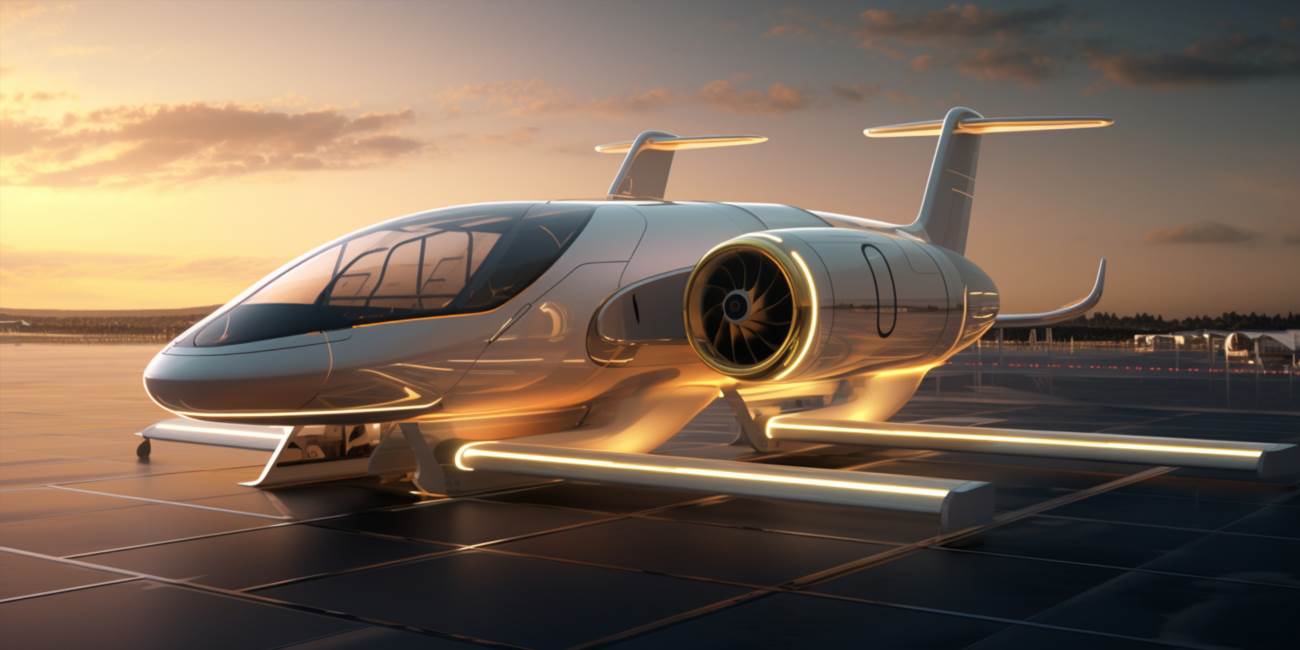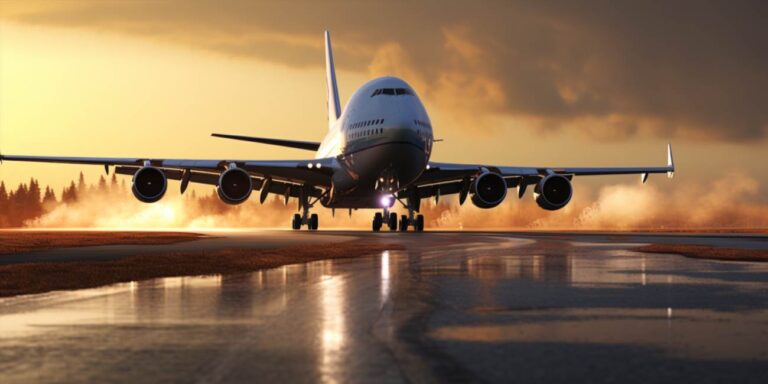The torchbearer in this changing landscape is the Boeing 777X. This next-gen aircraft takes the baton from the Boeing 747, offering airlines a perfect blend of capacity, efficiency, and cutting-edge technology. The Boeing 777X comes in two variants – the 777-8 and the 777-9. These giants boast impressive features, with the 777-9 being the largest twin-engine jet in the world.
One of the defining features of the 777X is its advanced engines. Powered by the General Electric GE9X, the largest and most powerful commercial aircraft engine ever built, this aircraft promises enhanced fuel efficiency and reduced environmental impact. The use of composite materials in its wings further adds to its fuel efficiency, setting a new standard in long-haul travel.
But it’s not just Boeing dominating the scene; Airbus has its contender making waves – the Airbus A350. The A350, designed for long-haul flights, comes in three variants: the A350-900, A350-1000, and the ultra-long-range A350-900ULR. With its sleek design and advanced aerodynamics, the A350 aims to provide airlines with a versatile and economical option to fill the void left by the Boeing 747.
As airlines around the world phase out their aging Boeing 747 fleets, they are turning to these innovative giants to meet the demands of modern air travel. The 777X and A350 are not merely replacements; they symbolize a new era in aviation, where efficiency, sustainability, and passenger comfort take center stage.
Let’s delve into a comparative overview of these titans:
| Aircraft | Capacity | Range | Engines |
|---|---|---|---|
| Boeing 777-9 | Up to 426 passengers | 7,285 nautical miles | General Electric GE9X |
| Airbus A350-1000 | Up to 440 passengers | 8,700 nautical miles | Rolls-Royce Trent XWB-97 |
These statistics showcase the competitive nature of the aviation industry, where aircraft manufacturers are vying to offer superior performance and efficiency. The 777X and A350 are setting new standards, signaling a big future for air travel beyond the era of the Boeing 747.
The airbus a380’s efficiency over the 747 and its decline
The Airbus A380, once hailed as the epitome of aviation engineering and opulence, stood tall as the world’s largest passenger aircraft, surpassing the iconic Boeing 747. In a fierce battle of the skies, these giants vied for supremacy, each representing a pinnacle in aeronautical achievement. However, as the aviation landscape evolved, so did the fortunes of these airborne leviathans.
The A380’s efficiency over the 747 stemmed from its innovative design, boasting a double-deck configuration that accommodated more passengers without compromising comfort. With airlines eager to capitalize on the growing demand for long-haul travel, the A380 became a symbol of luxury and scale.
But beneath its grandeur, a different narrative unfolded. Despite its impressive capacity, the A380 faced challenges in adapting to changing market dynamics. Airlines sought more fuel-efficient alternatives that could navigate evolving environmental regulations and economic uncertainties. The Boeing 747, with its decades-long legacy, began to show a surprising resilience in this shifting terrain.
The A380’s decline was exacerbated by a changing paradigm in air travel. The industry shifted towards point-to-point connectivity, favoring direct routes between smaller airports rather than funneling passengers through major hubs. This shift played into the hands of the more versatile Boeing 747, which could adeptly serve diverse routes with varying passenger loads.
Additionally, the A380 faced challenges in terms of airport infrastructure. Its colossal size necessitated specialized facilities and longer runways, limiting the number of airports capable of handling its sheer dimensions. The 747, being more adaptable to existing infrastructures, found favor among airlines seeking operational flexibility.
The economic factor also played a pivotal role in the A380’s demise. The massive operational costs, coupled with the necessity for high passenger volumes to break even, made the A380 a risky investment for many carriers. In contrast, the Boeing 747, with its smaller size and lower operational costs, became a more attractive option for airlines looking to balance capacity and profitability.
As the aviation industry entered a new era marked by efficiency, adaptability, and economic prudence, the A380 found itself gradually becoming a relic of a bygone era. Airlines, seeking to optimize their fleets for a changing market, turned their attention to more nimble and economical alternatives, leaving the A380’s once-dominant silhouette to fade against the backdrop of the sky.
In this dynamic interplay of innovation and pragmatism, the story of the Airbus A380 and its comparative efficiency against the Boeing 747 unfolds—a tale echoing the challenges of balancing ambition with the evolving demands of an ever-changing aviation landscape.
Boeing’s revolutionary 777x to replace the 747 jumbo jet

In the realm of aviation, Boeing has unveiled its latest marvel – the revolutionary 777x, poised to replace the iconic 747 jumbo jet. This groundbreaking aircraft marks a significant leap in the evolution of long-haul travel.
The 777x stands as a testament to Boeing’s commitment to innovation and pushing the boundaries of aerospace engineering. With its state-of-the-art design and cutting-edge technology, this aircraft promises to redefine the flying experience.
At the heart of this revolutionary transformation is the incorporation of advanced materials and aerodynamic features. The 777x boasts a carbon-fiber composite wing, the largest ever on a commercial airplane. This not only enhances fuel efficiency but also contributes to a quieter and smoother ride for passengers.
One of the key highlights is the folding wingtip – a first in the industry. This innovative feature allows the 777x to adapt to various airport gate sizes while maintaining optimal aerodynamic performance during flight. It’s a testament to Boeing’s commitment to versatility and efficiency.
Stepping inside the cabin, passengers are greeted with a spacious and luxurious environment. The interior of the 777x is designed for comfort, with larger windows providing stunning panoramic views. The aircraft’s innovative layout and amenities redefine long-haul travel, making it a truly unforgettable experience.
The decision to replace the legendary 747 jumbo jet with the 777x reflects the shifting dynamics of the aviation industry. While the 747 will forever hold its place in history, the 777x represents the future – a more fuel-efficient, technologically advanced, and passenger-friendly future.
As airlines around the world eagerly await the arrival of the 777x in their fleets, the aviation community is abuzz with excitement. This jumbo jet successor not only marks the end of an era but also heralds a new chapter in the fascinating story of human flight.
The boeing 787 dreamliner as the modern 747 replacement
When envisioning the future of air travel, the name Boeing immediately comes to mind. In this ever-evolving industry, the 787 Dreamliner has emerged as a beacon of innovation, positioning itself as the modern marvel destined to be the 747’s replacement. Let’s delve into the intricacies of this revolutionary aircraft.
The Boeing 787 is a testament to cutting-edge technology and a departure from conventional aviation norms. This sleek and fuel-efficient aircraft epitomizes the essence of modern air travel. With its distinctive design and advanced features, the Dreamliner has captured the imagination of both aviation enthusiasts and industry professionals alike.
Boasting a lightweight structure, the 787 leverages composite materials, enhancing fuel efficiency and overall performance. The use of state-of-the-art engines propels this aircraft into a league of its own, setting new standards for sustainability and environmental consciousness in the aviation sector.
The significance of the Dreamliner becomes even more pronounced when viewed through the lens of its role as the successor to the iconic 747. The 747, once the queen of the skies, redefined long-haul travel. Now, the torch is passed to the 787, ushering in a new era of air travel characterized by efficiency, comfort, and technological prowess.
As we bid farewell to the era of the 747, the 787 Dreamliner takes center stage. This transition represents more than just a changing of the guard; it signifies a paradigm shift in how we perceive and experience air travel. The 787 not only meets but exceeds the expectations set by its predecessor, solidifying its place as the true modern 747 replacement.
Stepping inside the Dreamliner is a revelation in itself. The cabin’s spacious layout, large windows, and ambient lighting create an atmosphere that transcends the conventional flying experience. Passengers are treated to a journey where comfort and technology harmoniously converge, redefining the very essence of long-haul flights.
It’s not just about the destination; it’s about the journey, and the 787 ensures that this journey is nothing short of extraordinary. The aviation landscape evolves, and with the Dreamliner, Boeing has not only embraced this evolution but has emerged as a trailblazer, setting the stage for the future of air travel.






